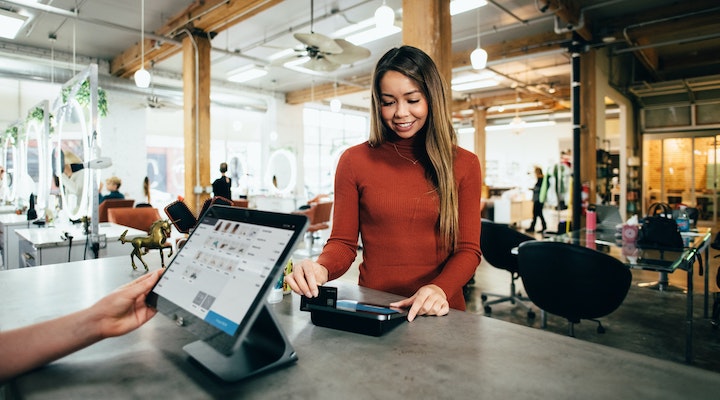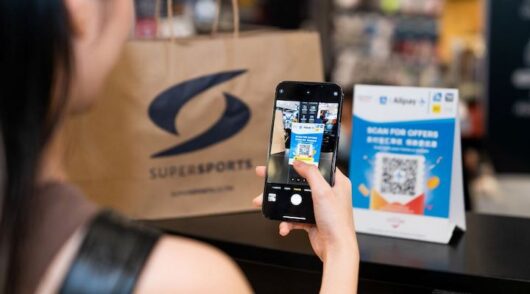Personalisation in retail has always been essential to improving the consumer shopping experience, yet payment customisation for merchants is less common.
It is, however, equally essential in shaping the future of online shopping UX for the new generation of consumers. In times where the Gen Z crowd and their rising spending power comes into play, young consumers equally expect their entire purchasing journey – from product to brand interactions and even at checkout – to be tailored specifically for them.
Payments are more than just cash and credit, albeit some southeast Asian markets are known to be more cash dominant. Yet the shift towards alternative payment methods has been called out for retailers to diversify their payment offerings in order to be agile in new markets and attain better conversion in attuning to local market demands.
Nuvei, tomorrow’s payment platform, is known for its proprietary technology of serving international retailers with a global range of alternative payment methods. Its platform is known to accept over 150 currencies and more than 550 payment methods, including next-generation modes, such as cryptocurrency. Praful Morar, global expansion officer for Nuvei Apac shared with Inside Retail during an interview on the importance of developing a customisation-first approach with payments to ultimately drive revenue optimisation.
Mobile-first generation
In Nuvei’s recent Gen Z Shoppers in Apac report, research indicated a quarter of the population in Apac will be made up of this segment by 2025, of which 98 per cent own a smartphone. As a result, this generation has begun to slowly phase out bulky physical wallets in replacement of the smartphone device in their pocket. Given their significance towards the future of retail, brands are shifting their priorities and focus toward the generation of new shoppers and their tech-savvy behaviour.
In Asia, super-apps are essential for the daily life of users, from cab-hailing to bill payments. The high smartphone penetration has prompted the push for digital payments, further coupled with the proliferation of online shopping. While mobile banking and e-commerce have boosted the confidence of Gen Z to adopt contactless payment and native digital wallets as their core payment methods, other forms of alternative payment methods have also surfaced out of the need to be aligned with local familiarity and usage.
Big cities like Hong Kong and Singapore have slowly been weaning out cash, replacing it with contactless payments and digital wallets. Yet in other cities such as Vietnam where a third of the population is under 40 years of age, the card penetration rate only sits under 10 per cent as the majority of payments are issued through bank transfers – an option, surprisingly, that is quicker than a credit card, shared Morar. In these environments, the integration of traditional payments and e-commerce are fused to offer alternative modes of payments with which locals are familiar.
Top alternative payment methods
Peer-to-Peer (P2P) payments have increasingly become a popular payment choice, just as Venmo – an American mobile payment app – has become a verb in life itself. From reimbursing colleagues over lunch to making payments over the counter when shopping, the convenience, and speed of transferring money amongst peers are equally expected to be offered in commercial settings as well. Singapore’s P2P platform PayNow (by the Singapore Government) is a best-in-class example of a P2P platform transitioning from a daily peer payment platform and expanding for business use-cases, alongside working with the government to disburse its subsidy schemes through their wallet.
Prevalent in the Western hemisphere, Buy Now Pay Later (BNPL) schemes have also become a widespread financing method, popular amongst Gen Z and millennials to purchase high-ticket price items at little to no interest rates. The rapid surge and adoption of BNPL have worked particularly well across Southeast Asia as micro-lending is now available to those who are unbanked or with limited access to credit. The region is expected to hit $92 billion in transactions by 2025, fuelled by Gen Z and millennial shoppers.
Cryptocurrency in payments has also slowly crept into retailers’ POS systems. Despite its current bearish situation, retailers such as Starbucks have begun welcoming cryptocurrency payments in exchange for goods, while India has also been trialling P2P crypto payments. Nuvei currently enables 40 cryptocurrency options as an alternative payment method, however, Morar explained: “It hasn’t adopted at the speed we thought it would because of all of the uncertainty that we’ve seen in recent months”, commenting on its volatility and complex nature paired with strict regulations that have limited the adoption of its use in retail. However, as the Gen Z and upcoming Gen Alpha consumers continue to develop and live in the Web3 space amongst the metaverse and collecting NFTs, cryptocurrency payments will become more expected and critical for retailers to consider.
Leveraging data
With the plethora of payment options, retailers need to leverage data, technology and partnerships to drive success in the new retail landscape. As online shopping becomes the norm, more alternative payment methods are being requested to support consumers – as the distinction between online and offline payments is becoming blurred. With many choices to choose from, Nuvei helps merchants to identify and personalise payment options that are best suitable for their customers to achieve better conversion.
Pre-Covid, the team had witnessed seismic changes as consumers shifted their spending online – a drastic difference in what was once considered a slow e-commerce region. Merchants had to find new ways of accepting payments, especially where cash was still king in many places and credit card ownership was negligible in numbers. With localised teams on the ground for each market, Nuvei looks into what’s being used amongst locals and helps consult on expansion plans to optimise payment resources.
“The analytical data that we provide is all readily online for the merchant. We have dedicated staff account managers that spend a lot of time with our merchants to analyse where to optimise,” shared Morar.
Customisation is key
As retailers continue to scale into new markets, entering unfamiliar territories, they are faced with new currencies and different sets of rules. Payment customisation is fundamental, especially for cross-border and international businesses looking to be part of a new market as merchants have to understand the local language, currency, regulations, lifestyle behaviours and more. Being customer-centric in retail benefits merchants to optimise revenue and conversion by achieving a higher acceptance of what locals are using.
As a publicly-listed company operating in more than 200 markets, Nuvei brings the key components for a merchant to trade and grow in any market by enabling alternative payment methods defined by the user’s choice.
“Our ambition is always to make sure that our merchants are able to collect their funds from their customers in any currency and any time zone,” expressed Morar. “Every single payment. That’s a key aspect of what we try to achieve.”
Download Gen Z Shoppers in Apac report here and watch the short video interview here:






